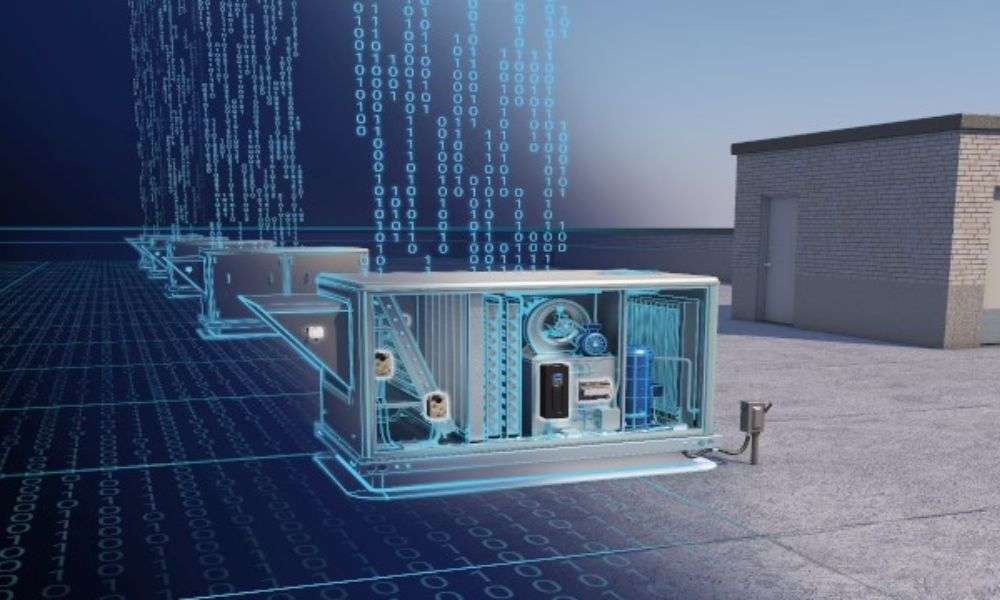In today’s fast-evolving technological landscape, the integration of Artificial Intelligence (AI) into the HVAC (Heating, Ventilation, and Air Conditioning) industry marks a significant milestone. This innovation is revolutionizing the way we approach remote diagnostics in this field. By harnessing the power of AI, we are now able to enhance efficiency, reduce downtime, and improve overall system performance. The primary keyword, remote diagnostics in hvac field with ai, is central to this transformation.
The application of remote diagnostics is not new. However, the integration of AI into this process introduces a new dimension of possibilities. From predicting system failures to optimizing energy usage, AI-driven diagnostics are paving the way for a smarter, more efficient future in HVAC management.

The Role of AI in Remote Diagnostics
AI plays a crucial role in the realm of remote diagnostics. It facilitates the real-time monitoring of HVAC systems, allowing technicians to detect anomalies and potential issues before they escalate. This proactive approach minimizes the risk of system failure and extends the lifespan of equipment.
How AI Enhances Efficiency
By analyzing vast amounts of data generated by HVAC systems, AI can identify patterns and predict potential faults. This predictive capability allows for timely interventions, reducing the need for emergency repairs and optimizing maintenance schedules. As a result, system efficiency is significantly enhanced.
Real-Time Data Monitoring
One of the standout features of AI in remote diagnostics is its ability to provide real-time data monitoring. This means that any deviation from normal operating conditions is immediately flagged, allowing for swift corrective actions. The continuous stream of data ensures that HVAC systems operate at peak efficiency at all times.
Benefits of Remote Diagnostics in HVAC with AI
The integration of AI into remote diagnostics offers a plethora of benefits. These include increased operational efficiency, reduced operational costs, and improved system reliability. Moreover, AI-driven diagnostics contribute to more sustainable energy usage, aligning with global efforts to combat climate change.
Cost Savings Through Predictive Maintenance
By predicting failures before they occur, AI helps in implementing predictive maintenance strategies. This not only reduces downtime but also curtails the costs associated with unexpected repairs. Companies can allocate resources more effectively, leading to substantial cost savings.
Enhanced Customer Satisfaction
With AI-powered remote diagnostics, service providers can ensure that HVAC systems are always running optimally. This leads to fewer complaints and enhanced customer satisfaction. Quick response times and efficient service delivery further contribute to positive customer experiences.
Challenges and Considerations
While the benefits are clear, there are challenges to consider. These include the initial costs of implementing AI technologies, the need for skilled personnel to manage and interpret AI-driven data, and potential cybersecurity risks. It is crucial for companies to address these challenges to fully leverage the advantages of AI in remote diagnostics.
Overcoming Implementation Costs
The upfront investment in AI technology can be substantial. However, the long-term benefits, including cost savings and improved efficiency, often outweigh these initial expenses. Companies must conduct thorough cost-benefit analyses to make informed decisions.
Ensuring Data Security
As with any technology that relies on data, ensuring the security of information is paramount. Companies must implement robust cybersecurity measures to protect sensitive data from breaches and cyber threats.
Real-World Applications
Several companies have successfully integrated AI into their HVAC systems, showcasing the transformative power of this technology. For example, AI-powered intelligent HVAC load forecasting is helping businesses optimize their energy usage, leading to significant cost savings.
Case Study: AI in HVAC Load Forecasting
One notable example is the use of AI in HVAC load forecasting. By predicting energy demand, companies can adjust their systems accordingly, reducing energy waste and lowering operational costs. This not only benefits the company but also contributes to environmental sustainability.
Future Prospects
The future of remote diagnostics in hvac field with ai is promising. As technology continues to evolve, we can expect even more sophisticated AI-driven solutions that further enhance system efficiency and reliability. The potential for innovation in this field is limitless.
Conclusion
In conclusion, the integration of AI into remote diagnostics within the HVAC industry is a game-changer. It offers numerous benefits, including improved efficiency, cost savings, and enhanced customer satisfaction. While challenges exist, they are outweighed by the advantages that AI brings to the table. As we continue to embrace this technology, the future of the HVAC industry looks brighter than ever.

FAQs
What is remote diagnostics in HVAC?
Remote diagnostics in HVAC refers to the use of technology to monitor and analyze HVAC systems from a distance, allowing for the detection and resolution of issues without the need for physical inspection.
How does AI improve HVAC efficiency?
AI improves HVAC efficiency by analyzing data to predict potential faults, optimize energy usage, and ensure that systems operate at peak performance, thus reducing energy waste and maintenance costs.
What are the challenges of implementing AI in HVAC?
Challenges include the initial cost of implementation, the need for skilled personnel to manage AI technologies, and ensuring data security to protect against cyber threats.
For more insights on how AI is changing the HVAC industry, you can read more on HVAC service innovations and HVAC technician tools.
This article contains affiliate links. We may earn a commission at no extra cost to you.
